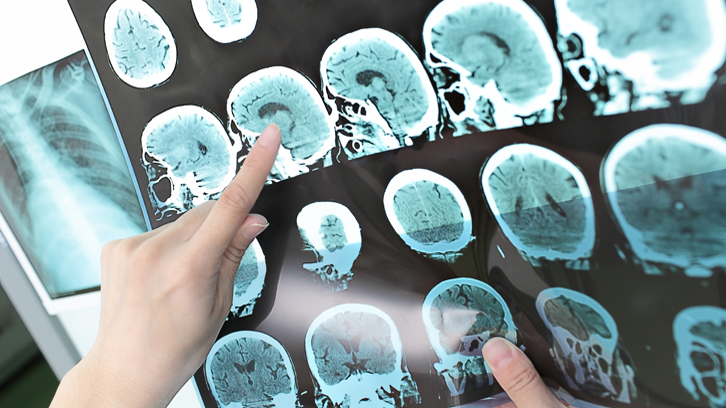Stroke: searching for biomarkers to predict evolution

Stroke consists of the sudden functional impairment of a determined brain area, due to a vascular cause. It could be due to the interruption of cerebral blood flow (ischemic stroke or cerebral infarction), or to the rupture of a brain vessel (hemorrhagic stroke or brain hemorrhage). Both entities lead to cell death within the impaired brain area.
Stroke represents one of the main causes of mortality and disability worldwide: Several months after stroke, many survivors remained with sequelae, leading to patient’s disability in almost a half of the cases. There are no tools in clinical practice that could be used to predict the evolution of each stroke patient. In other diseases, the use of blood biomarkers is usual for this indication, such as the case of troponin in the management of acute myocardial infarction. Those biomarkers are molecules acting as indicators of a pathophysiological process in relation with the disease, which could be easily measured.

At stroke onset , inflammatory mechanisms are started. Those mechanisms, under normal circumstances, are responsible for the entrance of defense cells or leukocytes in the affected area. Their role consist of removing debris derived from cell death, therefore contributing to restore the normal situation in close areas. For this reason, the permeability of the blood-brain-barrier (BBB), responsible for the regulation of the traffic of molecules between brain and bloodstream, should be increased. However, this inflammatory reaction also has deleterious effects, which are especially important in severe strokes. The increased BBB permeability might result in local complications, such as malignant infarcts of hemorrhagic transformations within the infarct. Both complications could be severe and life-threatening. Also, in the peripheral circulation, the abnormal inflammatory response might also condition complications such as infections or cardiac disorders.
The molecules that are released to the bloodstream during this inflammatory reaction represent a unique opportunity for the study of blood biomarkers in relation with stroke. In the present article, we conducted a review of the literature directed to three different categories of molecules involved in the inflammatory response after stroke: damage-associated molecular patters (DAMPs), cytokines and C-reactive protein (CRP). From a general perspective, we did not find strong associations for the most studied biomarkers (CRP and interleukin-6, essentially). Although its raised levels are usually associated with poor outcome after stroke, its additional predictive value over clinical information is just moderate, or even absent. This fact is of special importance, as clinical information is easily obtained at patient’s bedside.
Regarding post-stroke complications, we found very few studies evaluating the association of blood biomarkers and those complications. From a practical point of view, prediction of post stroke complications could be interesting, as it allow us the anticipation of these events and the initiation of therapeutic measures directed against them. In our opinion, biomarker’s research should be more focus on post-stroke complications prediction or early diagnosis in the near future, rather than prediction of stroke outcome.
Finally, as we expected as being new candidates, DAMPs have been not widely studied in relation with stroke outcome. However, given its important as triggers of the inflammatory response, we think that measurement of DAMPs and its receptors could be of great interest in the near future.
Neurology Department, Vall d'Hebron University Hospital
Universitat Autònoma de Barcelona
References
Bustamante A, Simats A, Vilar-Bergua A, García-Berrocoso T, Montaner J. Blood/Brain Biomarkers of Inflammation After Stroke and Their Association With Outcome: From C-Reactive Protein to Damage-Associated Molecular Patterns. Neurotherapeutics. 2016 Oct;13(4):671-684. DOI:10.1007/s13311-016-0470-2.


